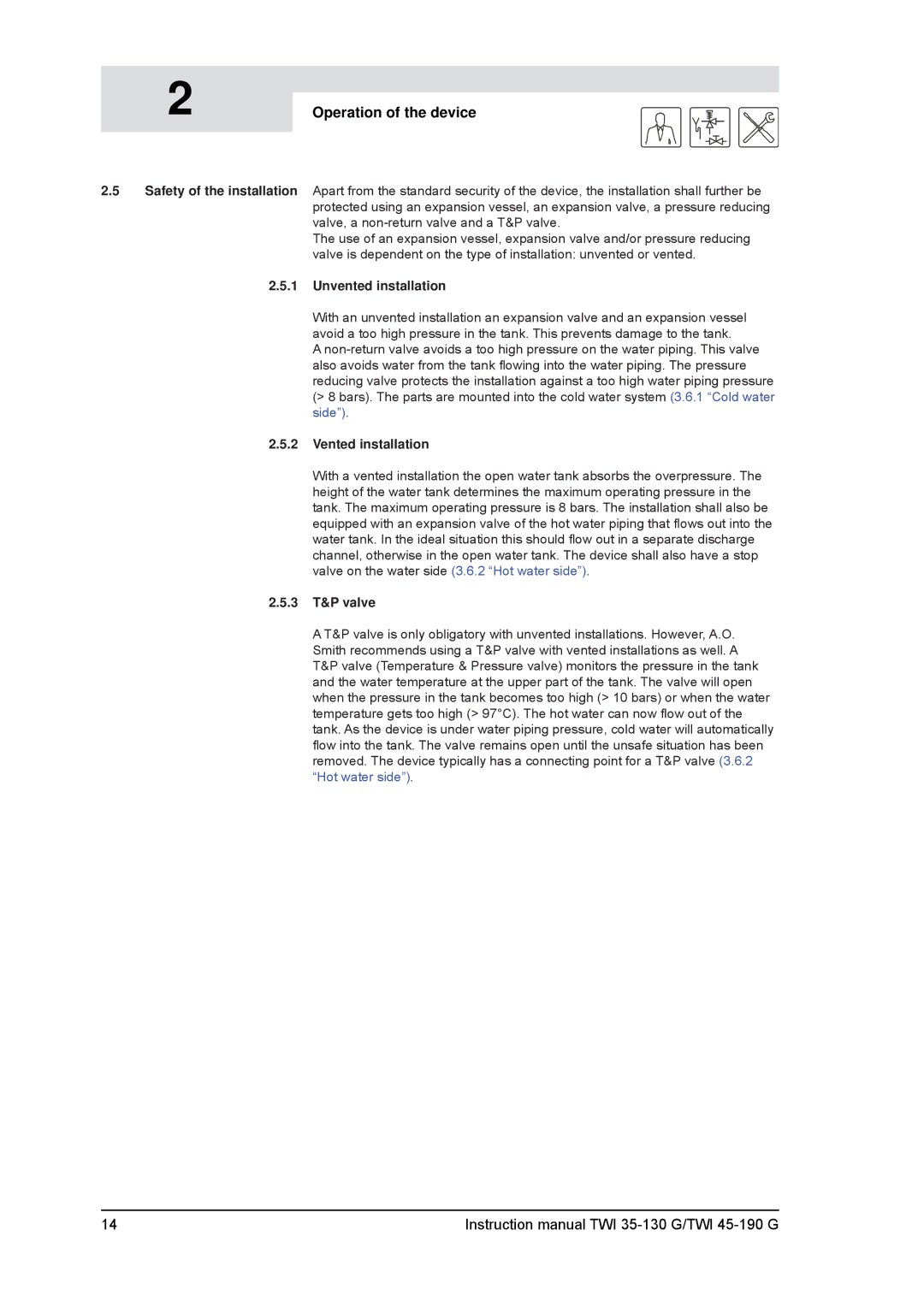TWI 35-130, TWI 45-190 specifications
A.O. Smith TWI 35-130 and TWI 45-190 are high-efficiency water heaters designed to meet the diverse needs of residential and commercial applications. These units are part of A.O. Smith’s extensive product line, known for reliability, durability, and energy efficiency.The TWI 35-130 model is a 35-gallon tank water heater, offering a first-hour delivery of 130 gallons. This capacity makes it suitable for households with moderate hot water demands. It features a compact design, allowing for easy installation in tighter spaces, which is ideal for urban settings. The unit operates on natural gas, promoting energy efficiency while reducing operational costs.
One of its main attributes is the advanced insulation technology that minimizes heat loss, thus enhancing overall energy efficiency. The TWI 35-130 is equipped with a state-of-the-art burner system that optimizes combustion for higher efficiency, translating to lower energy bills. Furthermore, it utilizes a dip tube that helps in delivering hot water promptly, ensuring that the demand for hot water is met swiftly.
On the other hand, the TWI 45-190 model caters to larger households or commercial settings with a 45-gallon capacity and a first-hour delivery of 190 gallons. This model also uses natural gas, but with a higher BTU rating, allowing for faster recovery rates, which is crucial during peak usage times.
Both models are designed with user-friendliness in mind, featuring intuitive controls that facilitate easy temperature adjustments and monitoring. Additionally, they incorporate safety features such as a temperature and pressure relief valve to prevent overheating and excessive pressure build-up, ensuring peace of mind for users.
Their innovative design also emphasizes longevity, with high-grade materials and protective coatings that resist corrosion and extend the lifespan of the tank. The TWI series stands out in the market not only for its performance and efficiency but also for its commitment to sustainability.
In summary, A.O. Smith's TWI 35-130 and TWI 45-190 water heaters bring together cutting-edge technology, efficiency, and reliability, making them excellent choices for both residential and commercial applications. With features designed to promote energy savings and user convenience, these models are poised to meet the hot water demands of modern life while adhering to high standards of safety and durability.

